Skip logic is a great tool to use to create a customized screener experience for participants. You can use it to change what questions a participant sees, dependent on their responses to a previous question. You can also use it to prevent leading participants towards certain answers and make sure you’re getting the most honest responses from them. If you're new to this feature, take a look at "How does skip logic work?" to learn the basics.
Once you have the basics down, here are some tips and best practices that will help make your screener even stronger.
“Reject” vs. “Finish”
An important thing to keep in mind—and one of the most common misunderstandings—is how the Reject and Finish criteria function. “Reject” answers do not send candidates to the end of the screener. They do, however, capture that this person will not qualify for the study, and will show as "Unqualified" on your list of participants.
If you DO want a candidate to skip to the end of a screener, you need to add "Finish" skip logic, like this:
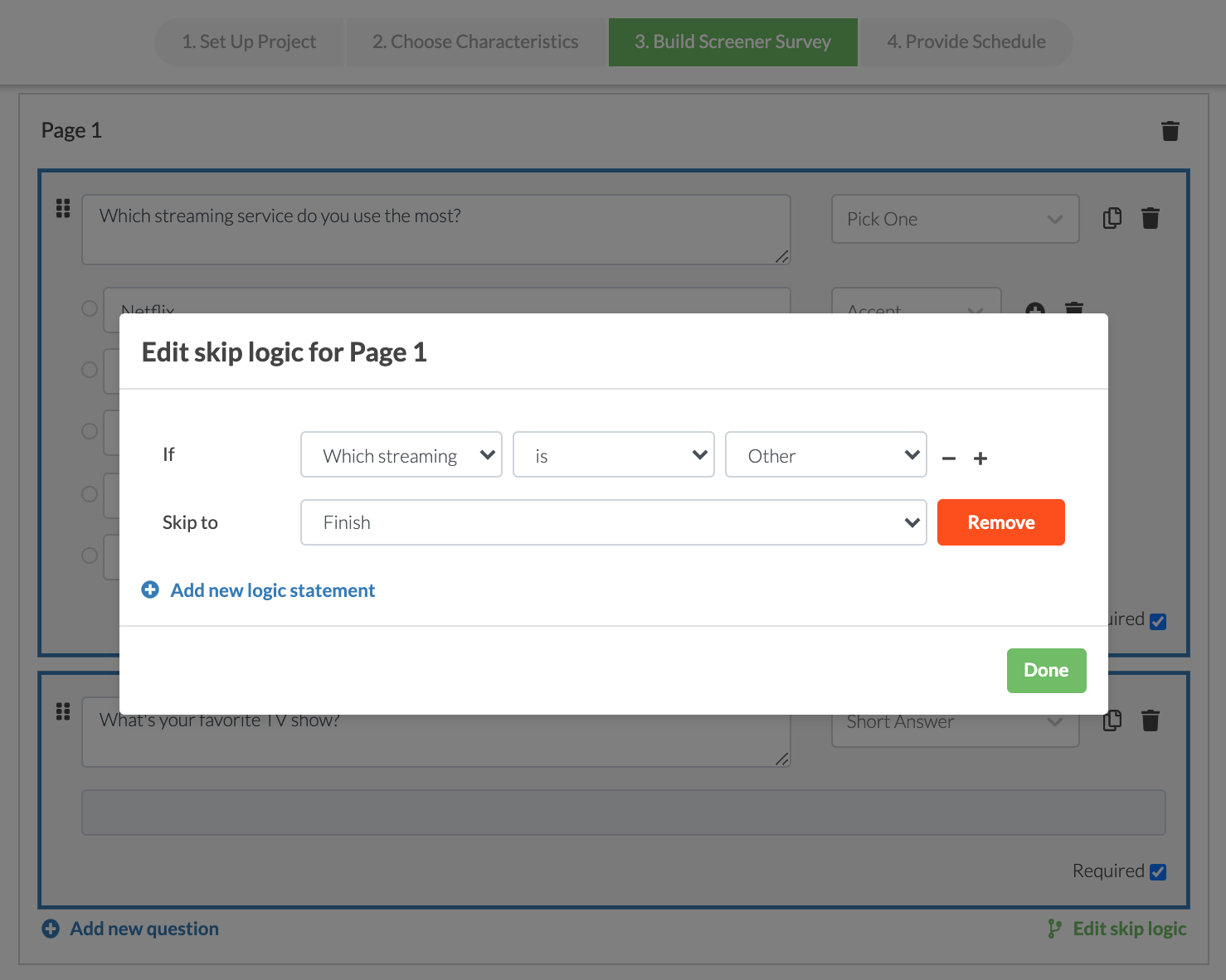
Keep in mind that people sent to "Finish" can still qualify for your study if none of their responses were rejected. They will only have the questions that they completed listed on their profile.
Pages are your friend
Although it can be tempting to try and keep a screener as compact as possible, we find that more pages = more clarity when skip logic is involved. Having just one question per page (and, more importantly, one question that uses skip logic per page) often helps keeps things streamlined and ensures there aren’t any errors with your logic. It also helps to prevent candidates from potentially missing out on important questions.
A participant will always be able to answer all questions on a screener page before being directed somewhere new via skip logic. If a page of your screener has, for example, 6 questions and the skip logic acts on question 3, a participant will have to answer all 6 questions before being directed to a new page. This is another reason why more pages is better. You may not want the participant to see questions 4, 5, and 6 prior to knowing how they will answer question 3.
Here is a quick example of splitting questions up between multiple pages. Say you’re conducting a study about cookie preferences and you’re mostly interested in hearing about chocolate chip cookies and sugar cookies. To make sure you’re hearing from participants about both, we’d recommend splitting up your pages like this:
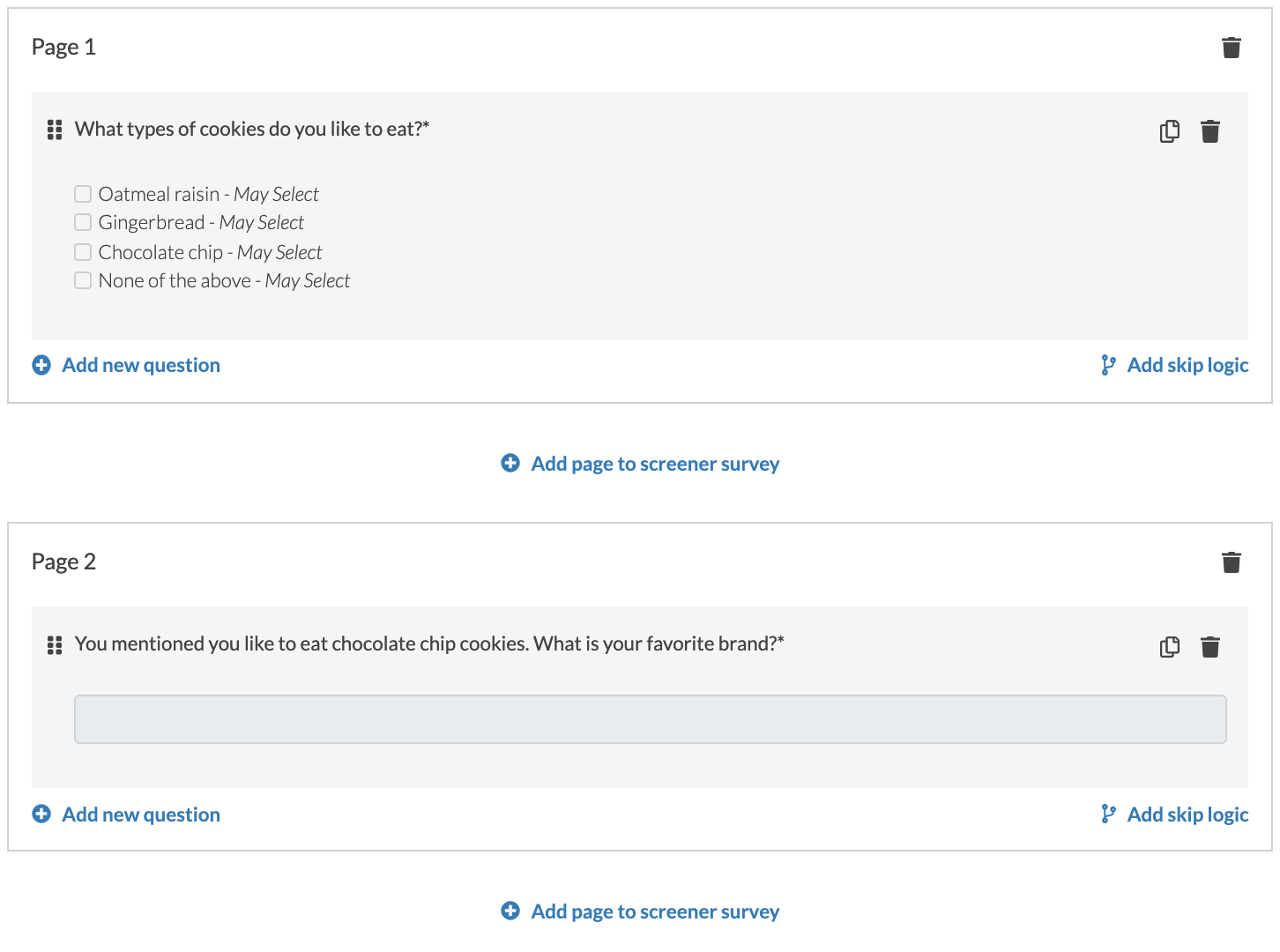

And we’d recommend using this Skip Logic:
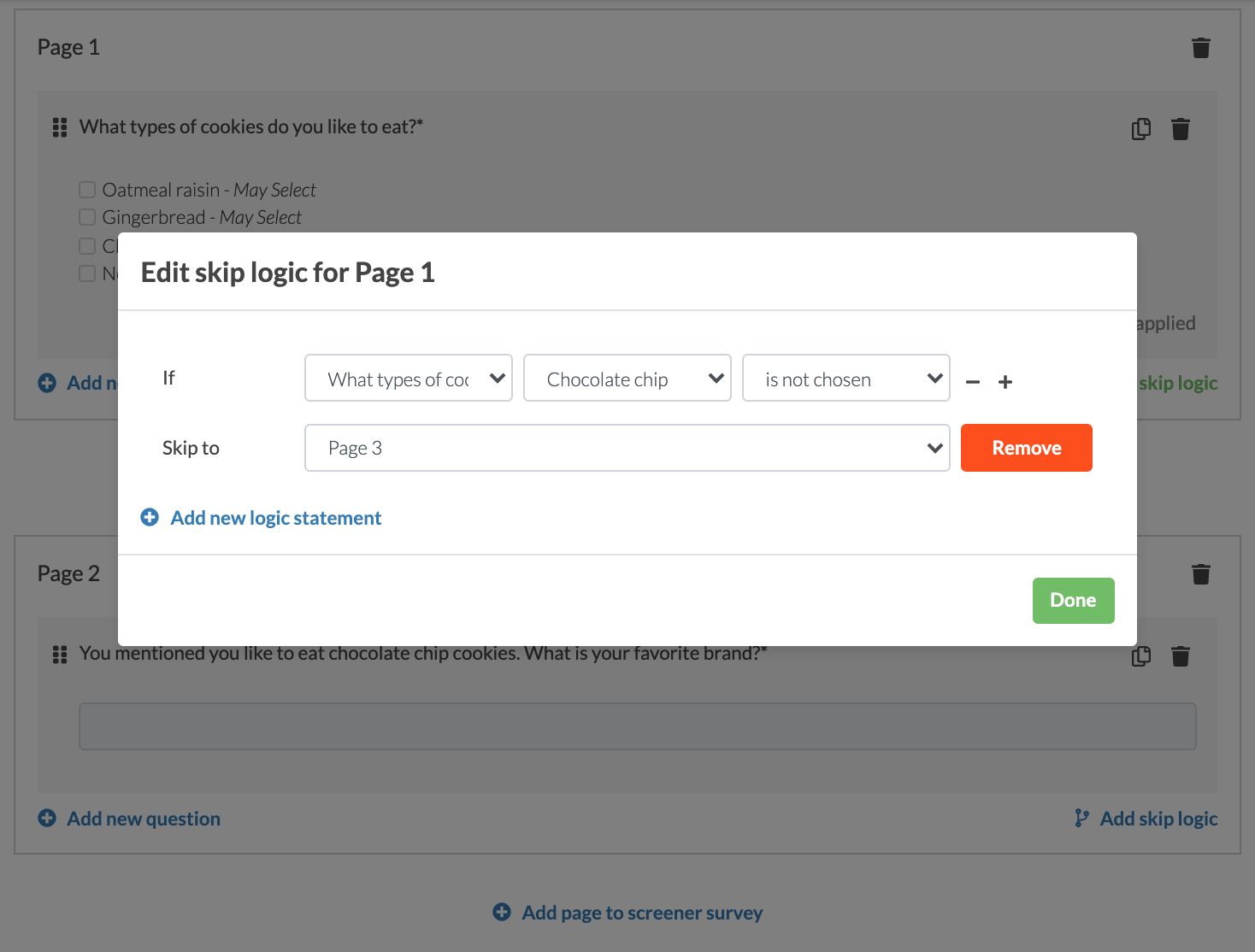

Keep it simple
When in doubt, just remember that the fewer logic clauses you add to any one page, the better. Things can get complicated when you combine “and” clauses with “or” clauses, or when you try to add multiple logic statements to the same page. Another reason why we recommend spreading your screener onto multiple pages!
To skip to Finish, or to not skip to Finish? That is the question.
One of the most frequently used features of skip logic is the ability to send a participant to the end of a screener as soon as they answer a question “incorrectly.” You should use this option when you’re 100% sure you don’t want to speak with any candidate who gives a particular answer.
While “Skip to finish” can be useful, you may want to consider not using it. You'll always have access to disqualified candidates, but their responses will be limited if they did not get to finish the screener. Keep that in mind, in case there's potential for flexibility on your recruiting criteria.
Moving questions around
To move a question within or between pages, simply click and drag the set of dots to the left of the question. If moving your question breaks the skip logic, we'll display a warning message.
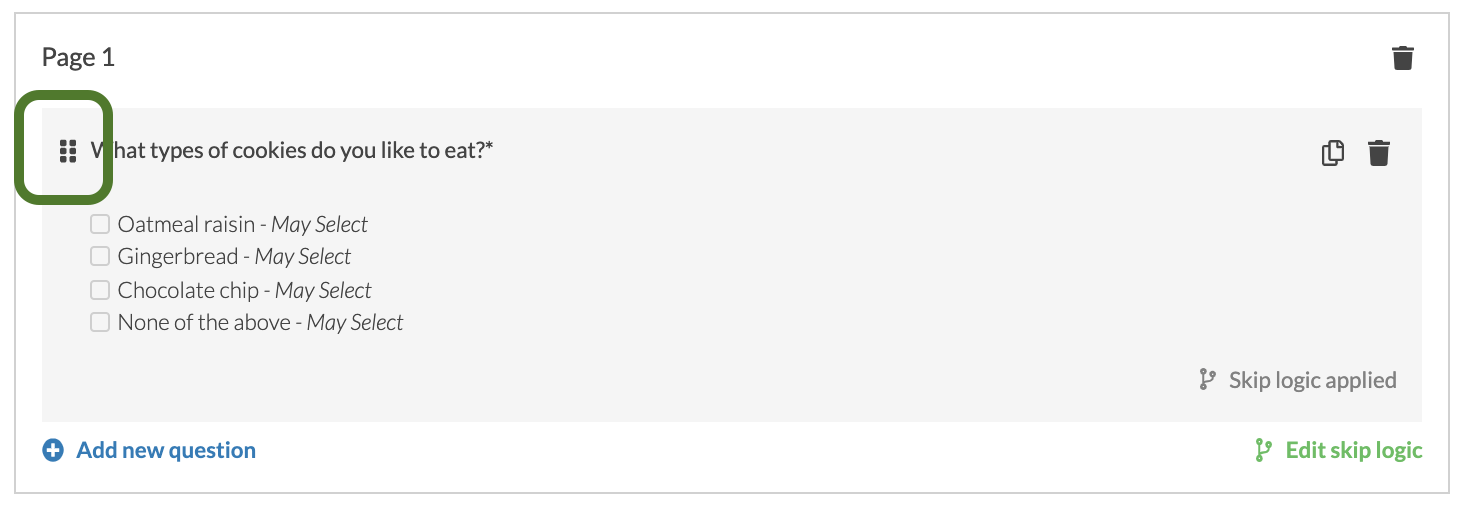
Editing your screener after a project is live
If you launch your study without skip logic and want add it later, it's easy to do so. Your Project Coordinator might send you an email suggesting this, or you may decide you need it yourself. In either case, click "Screener survey in the left hand menu for your project. Then click "Edit" in the top right corner.
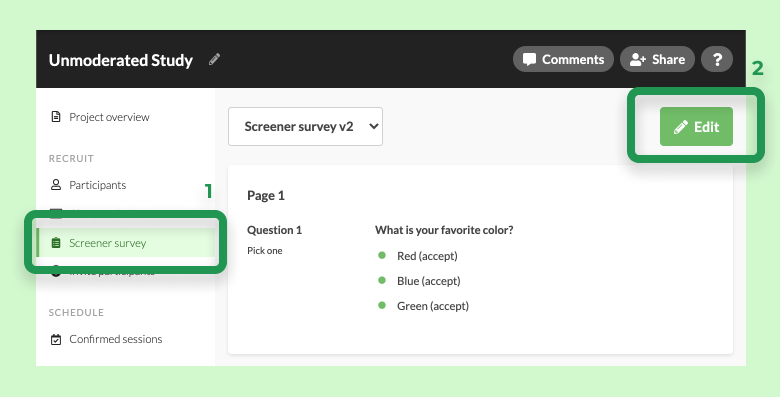
Do not base skip logic on multi-select questions
Say a participant chooses multiple answers within a multi-select question. Our skip logic reads top to bottom, so the logic will base off of their first answer within the question. If you'd like to base skip logic on a multi-select question, we'd recommend asking a single select question, branching skip logic on that, asking another single select question, and so on to collect that information.
Preview and test skip logic before launching your project!
We recommend testing all possible skip logic paths before launching your project. After all—you put a lot of effort into your screener survey, and it’s essential that it accurately determines if a participant qualifies. Click “Preview screener” when building your project and view the screener as if you’re a participant. Catching errors early makes for a quicker recruit!





